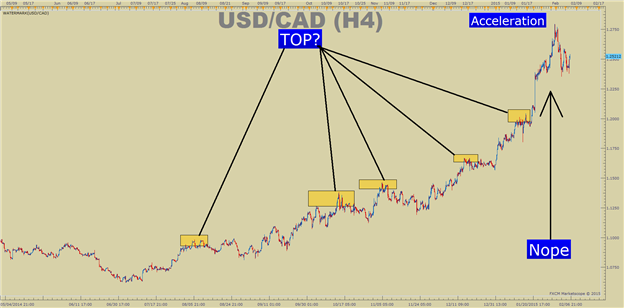MustKnow Simple & Effective Exit Trading Strategies (EA AA)
Post on: 21 Июнь, 2015 No Comment

Traders spend hours fine-tuning entry strategies but then blow out their accounts taking bad exits. In fact, most of us lack effective exit planning, often getting shaken out at the worst possible price. We can remedy this oversight with classic strategies that can enhance profitability. We’ll start with the misunderstood concept of market timing, then move on to stop and scaling methods that protect profits and reduce losses. (For related reading, see: A Look At Exit Strategies ).
It’s impossible to talk about exits without noting the importance of a holding period that synergizes well with your trading strategy. These magic time frames roughly align with the broad approach chosen to take money out of the financial markets:
- Day Trading – Minutes to Hours
- Swing Trading – Hours to Days
- Position Trading — Days to Weeks
- Investment Timing – Weeks to Months
Pick the category that aligns most closely with your market approach as this dictates how long you have to book your profit or loss. Stick to the parameters or you’ll risk turning a trade into an investment or momentum play into a scalp. This approach requires discipline because some positions perform so well you want to keep them beyond time constraints. While you can stretch and squeeze a holding period to account for market conditions, taking your exit within parameters builds confidence, profitability and trading skill. (For related reading, see: What Is The Difference Between Investing And Trading ).
Market Timing
Get into the habit of establishing reward and risk targets before entering each trade. Look at the chart and find the next resistance level likely to come into play within the time constraints of your holding period. That marks the reward target. Then find the price where you’ll be proven wrong if the security turns and hits it. That’s your risk target. Now calculate the reward:risk ratio, looking for at least 2:1 in your favor. Anything less and you should skip the trade, moving on to a better opportunity. (To learn more, read: Calculating Risk and Reward ).
Focus trade management on the two key exit prices. Let’s assume things are going your way and advancing price is moving toward your reward target. Price rate of change now comes into play because the faster it gets to the magic number, the more flexibility you have in choosing a favorable exit. Your first option is to take a blind exit at the price, pat yourself on the back for a job well done and move on to the next trade. A better option when price is trending strongly in your favor is to let it exceed the reward target, placing a protective stop at that level while you attempt to add to gains. Then look for the next obvious barrier, staying positioned as long as it doesn’t violate your holding period.
Slow advances are trickier to trade because many securities will approach but not reach the reward target. This requires a profit protection strategy that kicks into gear once price has traversed 75% of the distance between your risk and reward targets. Place a trailing stop that protects partial gains or, if you’re trading in real time, keep one finger on the exit button while you watch the ticker. The trick is to stay positioned until price action gives you a reason to get out. (For related reading, see: Protect Yourself From Market Loss )

Electronic Arts (EA ) sells off in October, undercutting the August low. It remounts support two days later, issuing a 2B Buy signal, as defined in the 1993 classic Trader Vic: Methods of a Wall Street Master . The trader calculates reward:risk as follows, planning an entry near 34 and a stop-loss just below the new support level:
- REWARD TARGET (38.39) — RISK TARGET(32.60) = 5.79
- REWARD = REWARD TARGET (38.39) — ENTRY (34) = 4.39
- RISK = ENTRY (34) — RISK TARGET(32.60) = 1.40
- REWARD (4.39) / RISK (1.40) = 3.13
The position goes better than expected, gapping above the reward target. The trader responds with a profit protection stop right at the reward target, raising it nightly as long the upside makes additional progress. (For related reading, see: Playing The Gap ).
Stop Loss Strategies
Stops need to go where they get you out when a security violates the technical reason you took the trade. This is a confusing concept for traders who have been taught to place stops based on arbitrary values, like a 5% drawdown or $1.50 under the entry price. These placements make no sense because they aren’t tuned to the characteristics and volatility of that particular instrument. Instead, use violations of technical features, like trendlines. round numbers and moving averages to establish the natural stop loss price. (Watch this video on Stop Loss Order Strategy for more).
Alcoa (AA ) rips higher in a steady uptrend. It stalls above 17 and pulls back to a 3-month trendline. The subsequent bounce returns to the high, encouraging the trader to enter a long position. in anticipation of a breakout. Common sense dictates that a trendline break will prove the rally thesis wrong, demanding an immediate exit. In addition, the 20-day SMA has aligned with the trendline, raising odds than a violation will attract additional selling pressure. (To learn more, see: The Utility Of Trendlines ).
Modern markets require an additional step in effective stop placement. Algorithms now routinely target common stop loss levels, shaking out retail players, and then jumping back across support or resistance. This requires that stops be placed away from the numbers that say you’re wrong and need to get out. Finding the perfect price to avoid these stop runs is more art than science. As a general rule, an additional 10 to 15 cents should work on a low volatility trade while a momentum play may require an additional 50 to 75 cents. You have more options when watching in real time because you can exit at your original risk target, re-entering if price jumps back across the contested level.
Scaling Exit Strategies
Raise your stop to break even as soon as a new trade moves into a profit. This has can build confidence because you now have a free trade. Then sit back and let it run until price reaches 75% of the distance between risk and reward targets. You then have the option to exit all at once or in pieces. This decision tracks position size as well as the strategy being employed. For example, it makes no sense to break a small trade into even smaller parts so rather seek the most opportune moment to dump the entire stake or apply the stop-at-reward strategy.
Larger positions benefit with a tiered exit strategy, exiting one third at 75% of the distance between risk and reward targets, and the second third at the target. Place a trailing stop behind the third piece after it exceeds the target, using that level as a rock bottom exit if the position turns south. Over time you’ll find this third piece is a lifesaver, often generating a substantial profit. Finally consider one exception to this tiered strategy. Sometimes the market hands out gifts and its our job to pick the low hanging fruit. So, when a news shock triggers a sizable gap in your direction, exit the entire position immediately and without regret, following the old wisdom that never looks a gift horse in the mouth. To learn more, see: Trailing-Stop/Stop-Loss Combo Leads To Winning Trades ).
The Bottom Line
An effective exit strategy builds confidence, trade management skills and profitability. Start by calculating reward and risk levels prior to entering a trade, using those levels to as a blueprint to exit the position at the most advantageous price, whether you’re taking a profit or a loss.














